
PURE
SOTA RL fine-tuning solution for advanced math reasoning of LLM
Stars: 94
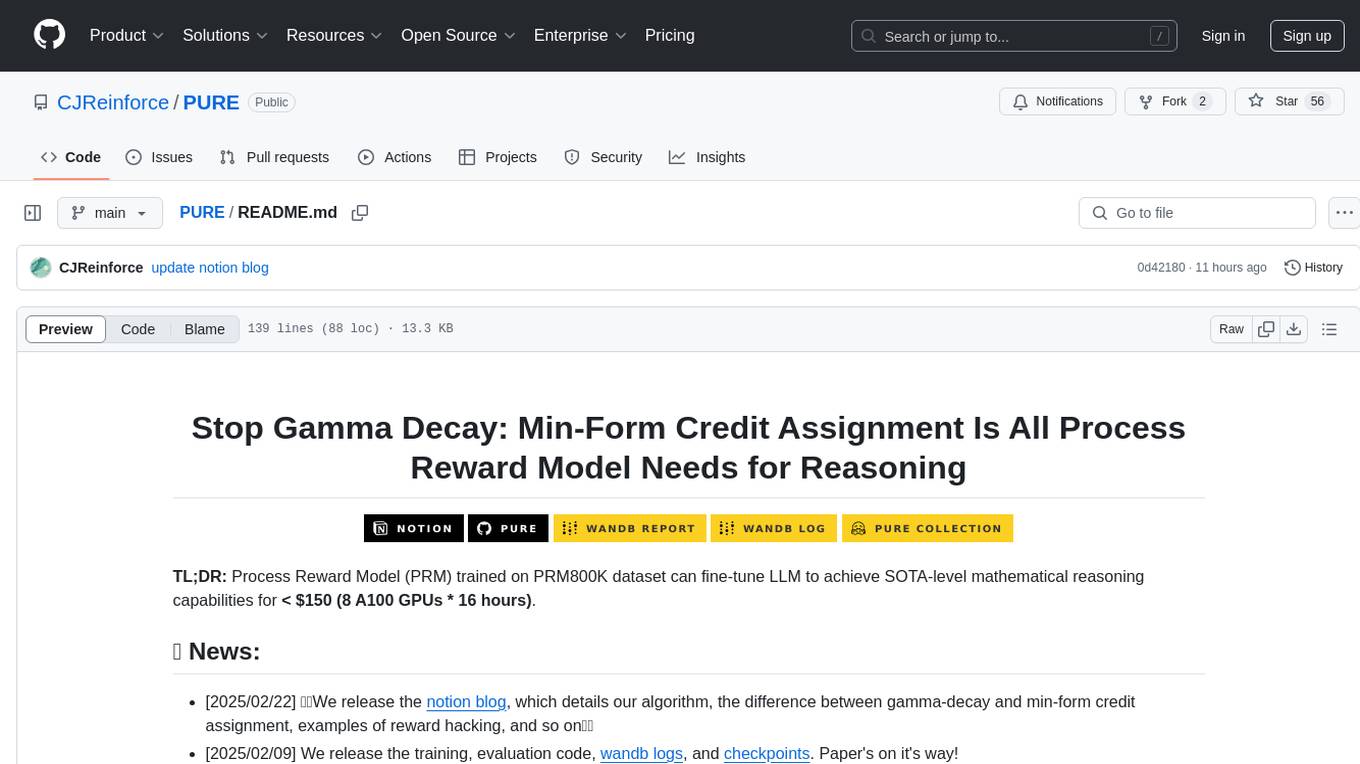
PURE (Process-sUpervised Reinforcement lEarning) is a framework that trains a Process Reward Model (PRM) on a dataset and fine-tunes a language model to achieve state-of-the-art mathematical reasoning capabilities. It uses a novel credit assignment method to calculate return and supports multiple reward types. The final model outperforms existing methods with minimal RL data or compute resources, achieving high accuracy on various benchmarks. The tool addresses reward hacking issues and aims to enhance long-range decision-making and reasoning tasks using large language models.
README:
TL;DR: Process Reward Model (PRM) trained on PRM800K dataset can fine-tune LLM to achieve SOTA-level mathematical reasoning capabilities for < $150 (8 A100 GPUs * 16 hours).
- [2025/03/24] We re-implement our algorithm based on verl. ✨✨ Key features: (1) add ~50 additional metrics to comprehensively monitor the training process and stability, (2) add a custom wandb workerspace to monitor ~20 important metrics, (3) add curriculum learning.✨✨
- [2025/02/22] 🔥🔥We release the notion blog, which details our algorithm, the difference between gamma-decay and min-form credit assignment, examples of reward hacking, and so on🔥🔥
- [2025/02/09] We release the training, evaluation code, wandb, and checkpoints. Paper's on it's way!
This month, we saw a huge boost in LLM reasoning power from the verifiable reward (VR)-based Reinforcement learning fine-tuning (ReFT). Previous work has encountered challenges and made unsuccessful attempts in exploring PRM, so we wonder: How far can PRM actually take us? How does it stack up against VR-based methods in reasoning performance, training costs?
To answer these questions, we present PURE (Process-sUpervised Reinforcement lEarning). Employing Qwen2.5-Math-7B as the base model, we train a PRM using PRM800K dataset, and then fine-tune another Qwen2.5-Math-7B model using only 8K MATH prompts, process rewards from the PRM, and optional verifiable rewards. For the RL algorithm, we use the PPO loss with an RLOO advantage estimator. We improve credit assignment by using a weighted sum of the process rewards, $\sum_t \text{softmax}(-\text{PR}_t/T)\cdot\text{PR}_t$ which approximates ${\min}_t \text{PR}_t$ when $T\rightarrow 0$, instead of the usual gamma decay sum $\sum_t \gamma^t \cdot \text{PR}_t$ to calculate return. Our framework supports multiple reward types: only process reward (PURE-PRM), only verifiable reward (PURE-VR) which is the Deepseek-R1-zero's setting, or a mix of both (PURE-PRM+VR), as shown in the following table.
📊 The final model achieves pass@1 accuracy of 82.6% on MATH500, 82.5% on AMC, and 53.3% on average across 5 benchmarks, beating Qwen2.5-math-7B-instruct, PRIME, and SimpleRL with just either <1/50th RL data or 1/5th of the compute resources.
All results are in pass@1 accuracy
| AIME 2024 | MATH 500 | AMC | Minerva Math | OlympiadBench | Avg. | |
|---|---|---|---|---|---|---|
| Qwen2.5-Math-7B-Base | 13.3 | 71.8 | 47.5 | 29.8 | 35.1 | 39.5 |
| Qwen-2.5-Math-7B-Instruct | 16.7 | 83.2 | 52.5 | 37.5 | 41.3 | 46.2 |
| Eurus-2-7B-PRIME | 26.7 | 79.2 | 57.8 | 38.6 | 42.1 | 48.9 |
| Qwen2.5-7B-SimpleRL-Zero | 33.3 | 77.2 | 62.5 | 33.5 | 37.6 | 48.8 |
| Qwen2.5-7B-PURE-PRM+VR* | 20.0 | 82.6 | 82.5 | 37.1 | 44.1 | 53.3 |
| Qwen2.5-7B-PURE-PRM | 16.7 | 81.8 | 60.0 | 38.2 | 44.7 | 49.3 |
| Qwen2.5-7B-PURE-VR | 23.3 | 79.4 | 60.0 | 36.8 | 41.8 | 48.3 |
*The SOTA model was trained using 8K MATH problems, of which only ~800 gave ground-truth final answers that could be used to calculate VRs.
Note: Eurus-2-7B-PRIME, and SimpleRL-Zero are also based on Qwen-2.5-Math-7B.
We implement our algorithm on two frameworks, OpenRLHF and verl, in 2 different branches respectively. If you are new to our project, we recommend using verl version.
Please follow OpenRLHF's guidance to configure required environments. Then run pip install -r requirements.txt.
Please refer to the official installation guidance of verl.
We train the PRM in 2 stages using TRL and a preprocessed PRM800K dataset. In the first stage, we freeze the LLM and only train the last score layer (MLP) with 1e-4 learning rate rate for 3 epochs. In the second stage, we unfreeze the LLM and fine-tune all parameters with 1e-6 learning rate for 1 epoch. The resultant PRM is released through HuggingFace.
cd PRM
# stage 1
bash train_stage_1.sh
# stage 2
bash train_stage_2.shSwitch to the openrlhf branch. Run the following command. It uses Ray+vLLM for rollout acceleration, with the first 4 GPUs allocated for the actor, initial actor (reference model), and PRM. The remaining GPUs are used for the vLLM engines. This setup works with 5 to 8 GPUs—just adjust the number of vLLM engines in the script accordingly.
bash examples/scripts/train_pure.shSwitch to the verl branch. Modify the actor_rollout_ref.model.path, trainer.default_local_dir in the config file. Then start training:
python -m verl.trainer.main_ppoThe hybrid engine of verl allows for higher gpu utilization compared to the openrlhf version.
We use Qwen Math's codebase for evaluation (i.e., pass@1 accuracy). For fairness considerations, we completely prohibited solving problems by calling code, following SimpleRL. Please follow the /eval instructions for evaluation.
- [x] re-implementation on verl
- [ ] paper with more discussions and evaluations
- [ ] attempts to mitigate reward hacking for PRM (Online PURE)
If you find our code useful, we would appreciate it if you could cite our work:
@misc{cheng2025pure,
title={Stop Gamma Decay: Min-Form Credit Assignment Is All Process Reward Model Needs for Reasoning},
author={Jie Cheng and Lijun Li and Gang Xiong and Jing Shao and Yisheng Lv and Fei-Yue Wang},
year={2025},
howpublished={\url{https://tungsten-ink-510.notion.site/Stop-Gamma-Decay-Min-Form-Credit-Assignment-Is-All-Process-Reward-Model-Needs-for-Reasoning-19fcb6ed0184804eb07fd310b38af155?pvs=4}},
note={Notion Blog}
year={2025}
}We implement our RL algorithm based on OpenRLHF and verl. We thank the developers of OpenRLHF and the author of SimpleRL for discussion! In addition, we also refer to TRL, PRIME's code and hyperparameter values to varying degrees. Thank them for their wonderful work!
For Tasks:
Click tags to check more tools for each tasksFor Jobs:
Alternative AI tools for PURE
Similar Open Source Tools

PURE
PURE (Process-sUpervised Reinforcement lEarning) is a framework that trains a Process Reward Model (PRM) on a dataset and fine-tunes a language model to achieve state-of-the-art mathematical reasoning capabilities. It uses a novel credit assignment method to calculate return and supports multiple reward types. The final model outperforms existing methods with minimal RL data or compute resources, achieving high accuracy on various benchmarks. The tool addresses reward hacking issues and aims to enhance long-range decision-making and reasoning tasks using large language models.
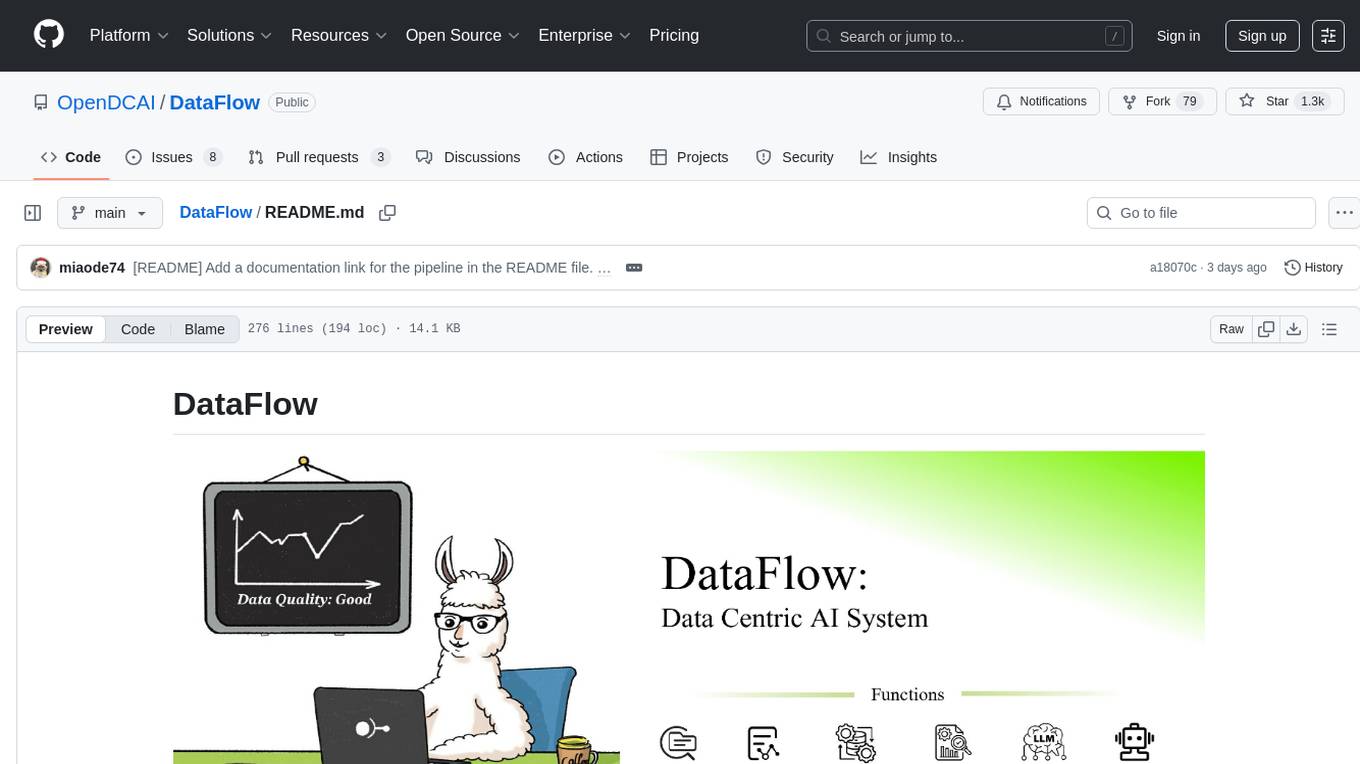
DataFlow
DataFlow is a data preparation and training system designed to parse, generate, process, and evaluate high-quality data from noisy sources, improving the performance of large language models in specific domains. It constructs diverse operators and pipelines, validated to enhance domain-oriented LLM's performance in fields like healthcare, finance, and law. DataFlow also features an intelligent DataFlow-agent capable of dynamically assembling new pipelines by recombining existing operators on demand.
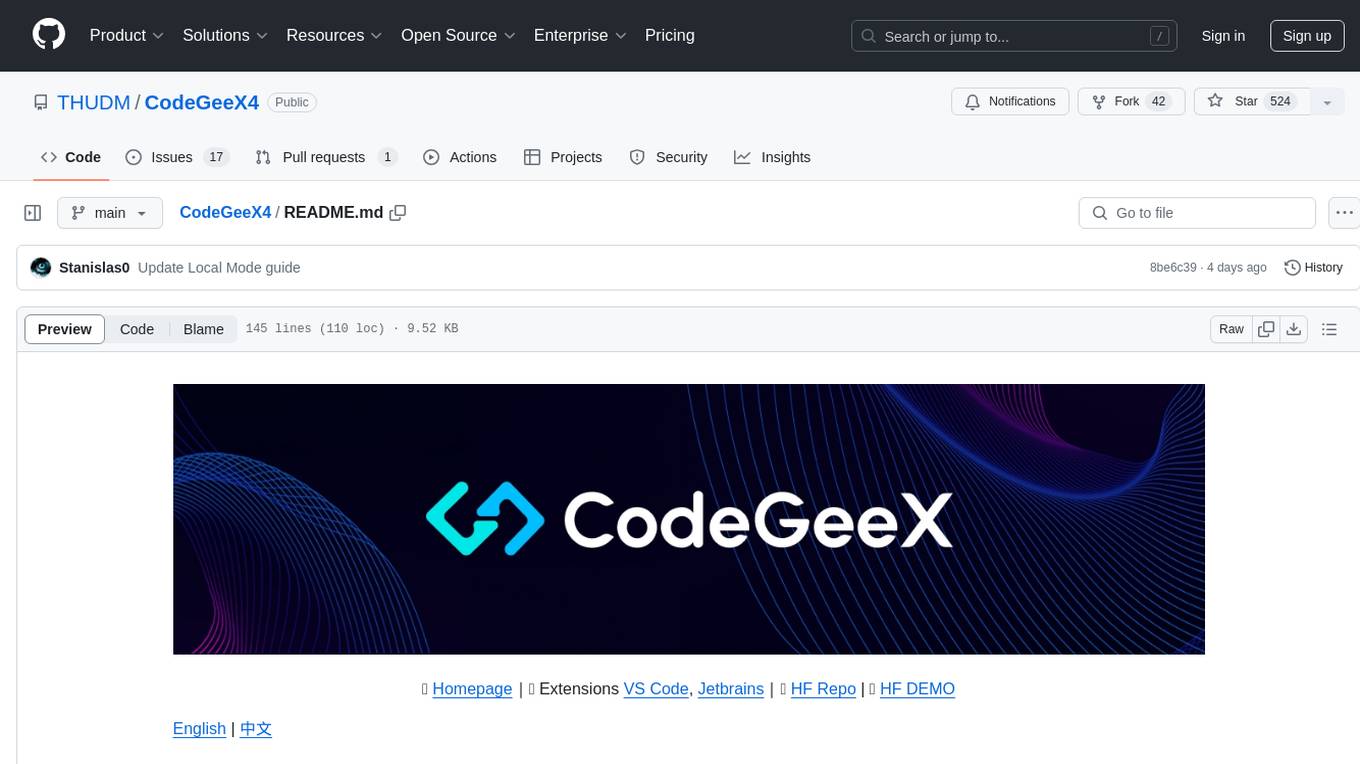
CodeGeeX4
CodeGeeX4-ALL-9B is an open-source multilingual code generation model based on GLM-4-9B, offering enhanced code generation capabilities. It supports functions like code completion, code interpreter, web search, function call, and repository-level code Q&A. The model has competitive performance on benchmarks like BigCodeBench and NaturalCodeBench, outperforming larger models in terms of speed and performance.
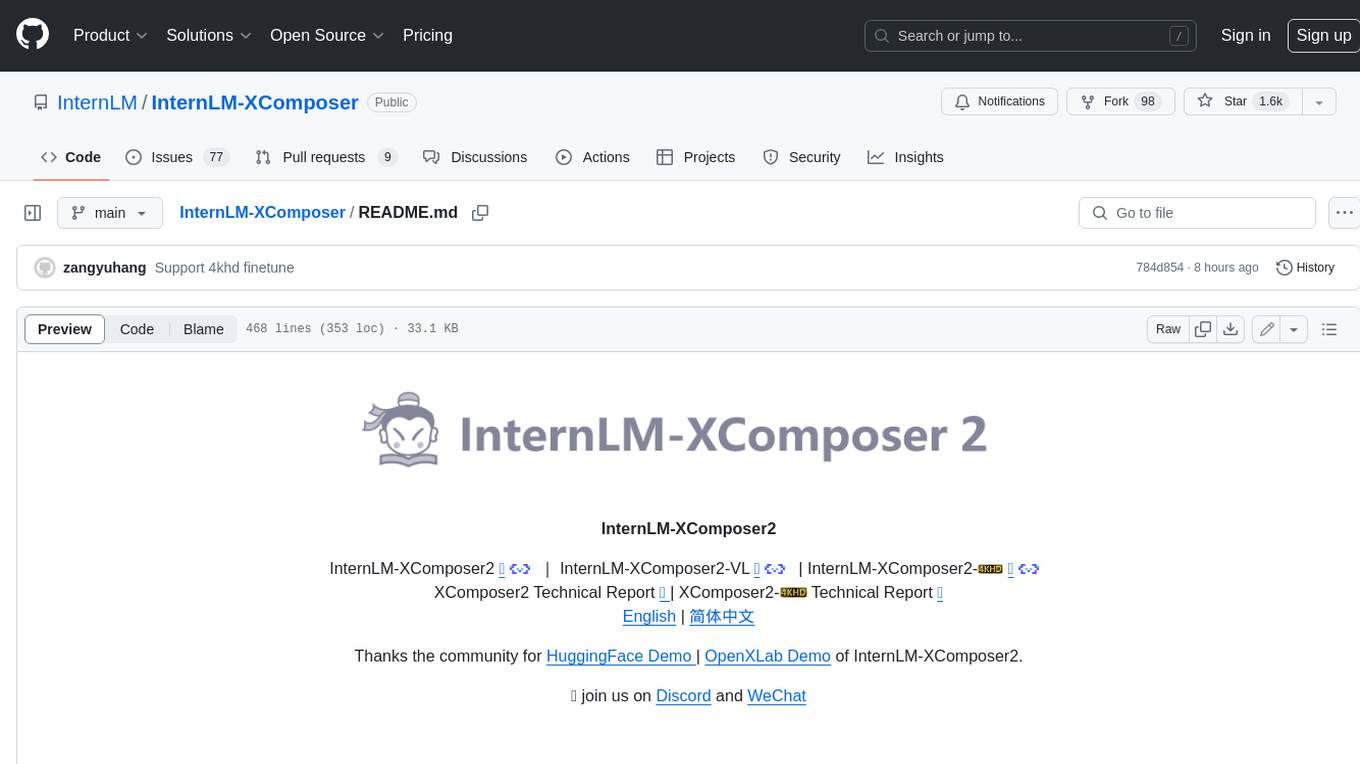
InternLM-XComposer
InternLM-XComposer2 is a groundbreaking vision-language large model (VLLM) based on InternLM2-7B excelling in free-form text-image composition and comprehension. It boasts several amazing capabilities and applications: * **Free-form Interleaved Text-Image Composition** : InternLM-XComposer2 can effortlessly generate coherent and contextual articles with interleaved images following diverse inputs like outlines, detailed text requirements and reference images, enabling highly customizable content creation. * **Accurate Vision-language Problem-solving** : InternLM-XComposer2 accurately handles diverse and challenging vision-language Q&A tasks based on free-form instructions, excelling in recognition, perception, detailed captioning, visual reasoning, and more. * **Awesome performance** : InternLM-XComposer2 based on InternLM2-7B not only significantly outperforms existing open-source multimodal models in 13 benchmarks but also **matches or even surpasses GPT-4V and Gemini Pro in 6 benchmarks** We release InternLM-XComposer2 series in three versions: * **InternLM-XComposer2-4KHD-7B** 🤗: The high-resolution multi-task trained VLLM model with InternLM-7B as the initialization of the LLM for _High-resolution understanding_ , _VL benchmarks_ and _AI assistant_. * **InternLM-XComposer2-VL-7B** 🤗 : The multi-task trained VLLM model with InternLM-7B as the initialization of the LLM for _VL benchmarks_ and _AI assistant_. **It ranks as the most powerful vision-language model based on 7B-parameter level LLMs, leading across 13 benchmarks.** * **InternLM-XComposer2-VL-1.8B** 🤗 : A lightweight version of InternLM-XComposer2-VL based on InternLM-1.8B. * **InternLM-XComposer2-7B** 🤗: The further instruction tuned VLLM for _Interleaved Text-Image Composition_ with free-form inputs. Please refer to Technical Report and 4KHD Technical Reportfor more details.
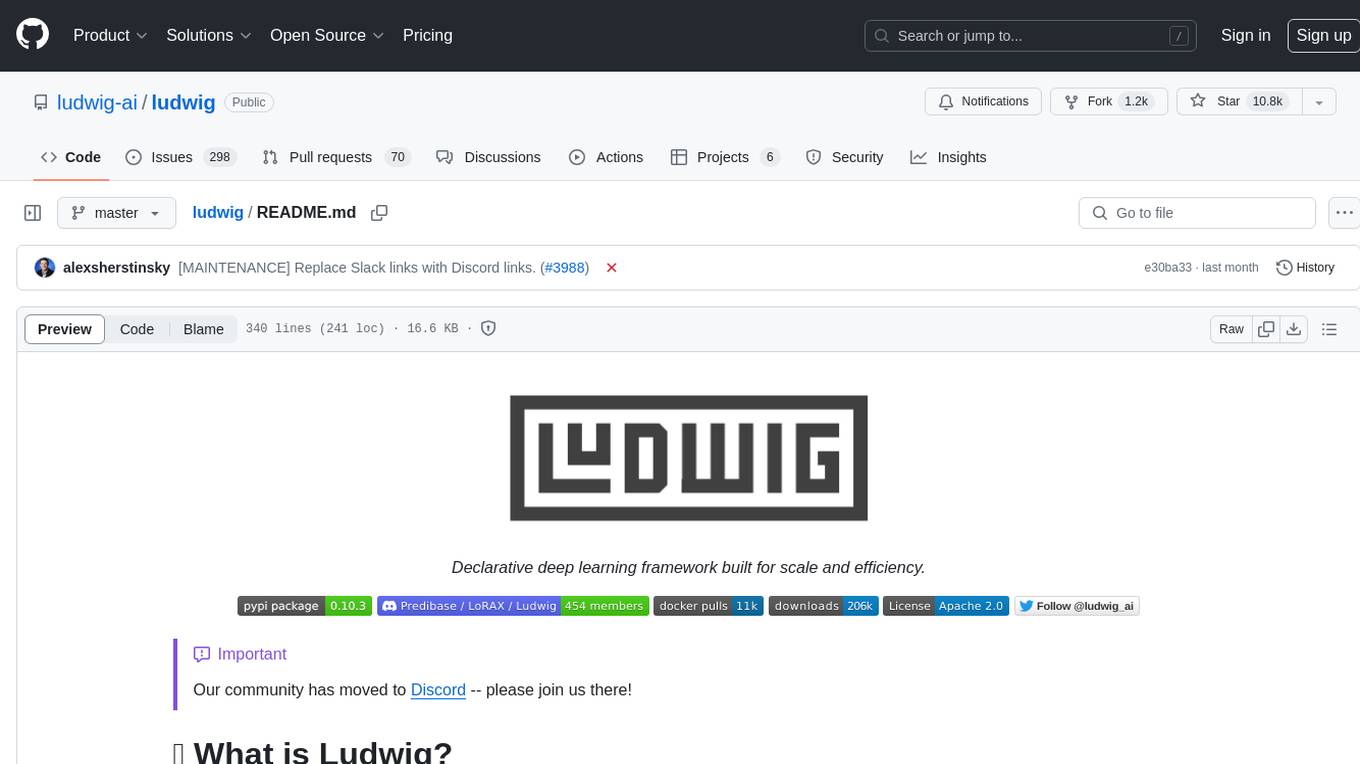
ludwig
Ludwig is a declarative deep learning framework designed for scale and efficiency. It is a low-code framework that allows users to build custom AI models like LLMs and other deep neural networks with ease. Ludwig offers features such as optimized scale and efficiency, expert level control, modularity, and extensibility. It is engineered for production with prebuilt Docker containers, support for running with Ray on Kubernetes, and the ability to export models to Torchscript and Triton. Ludwig is hosted by the Linux Foundation AI & Data.
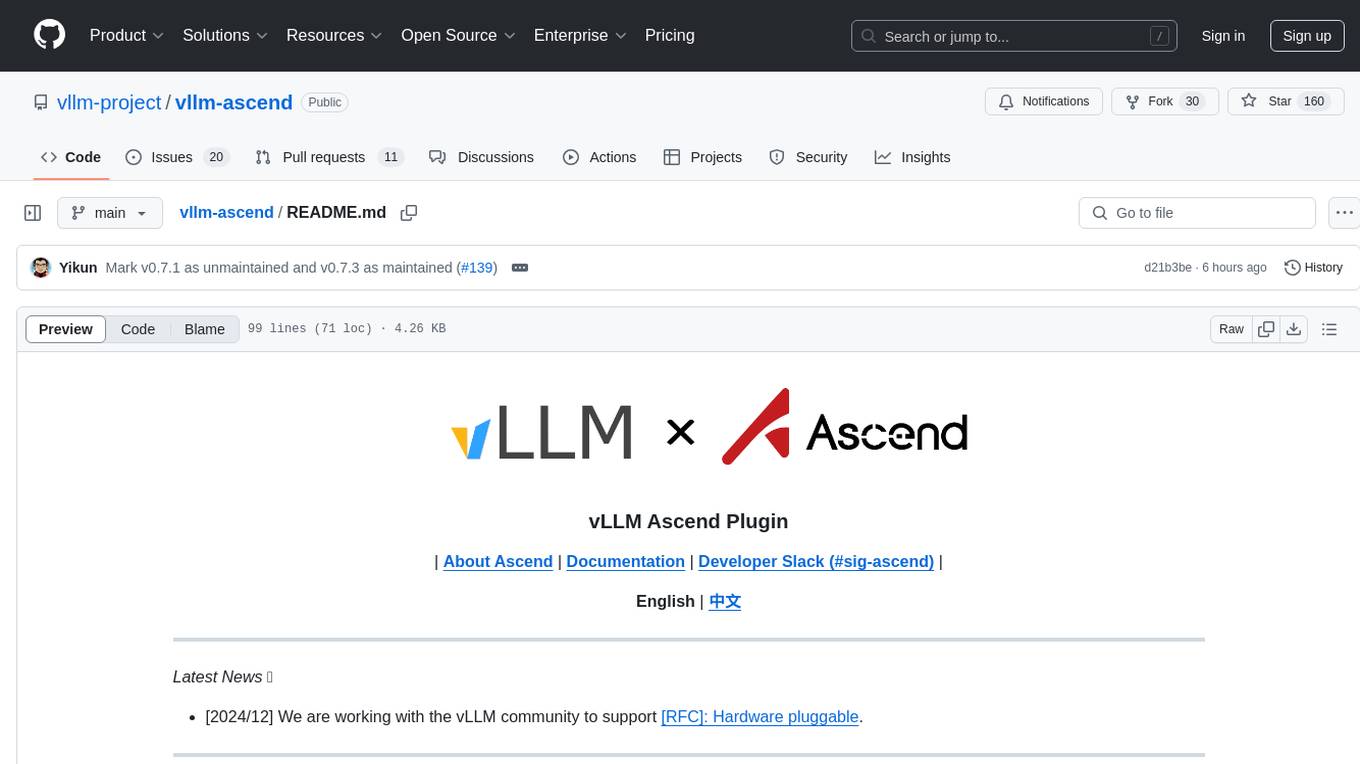
vllm-ascend
vLLM Ascend plugin is a backend plugin designed to run vLLM on the Ascend NPU. It provides a hardware-pluggable interface that allows popular open-source models to run seamlessly on the Ascend NPU. The plugin is recommended within the vLLM community and adheres to the principles of hardware pluggability outlined in the RFC. Users can set up their environment with specific hardware and software prerequisites to utilize this plugin effectively.
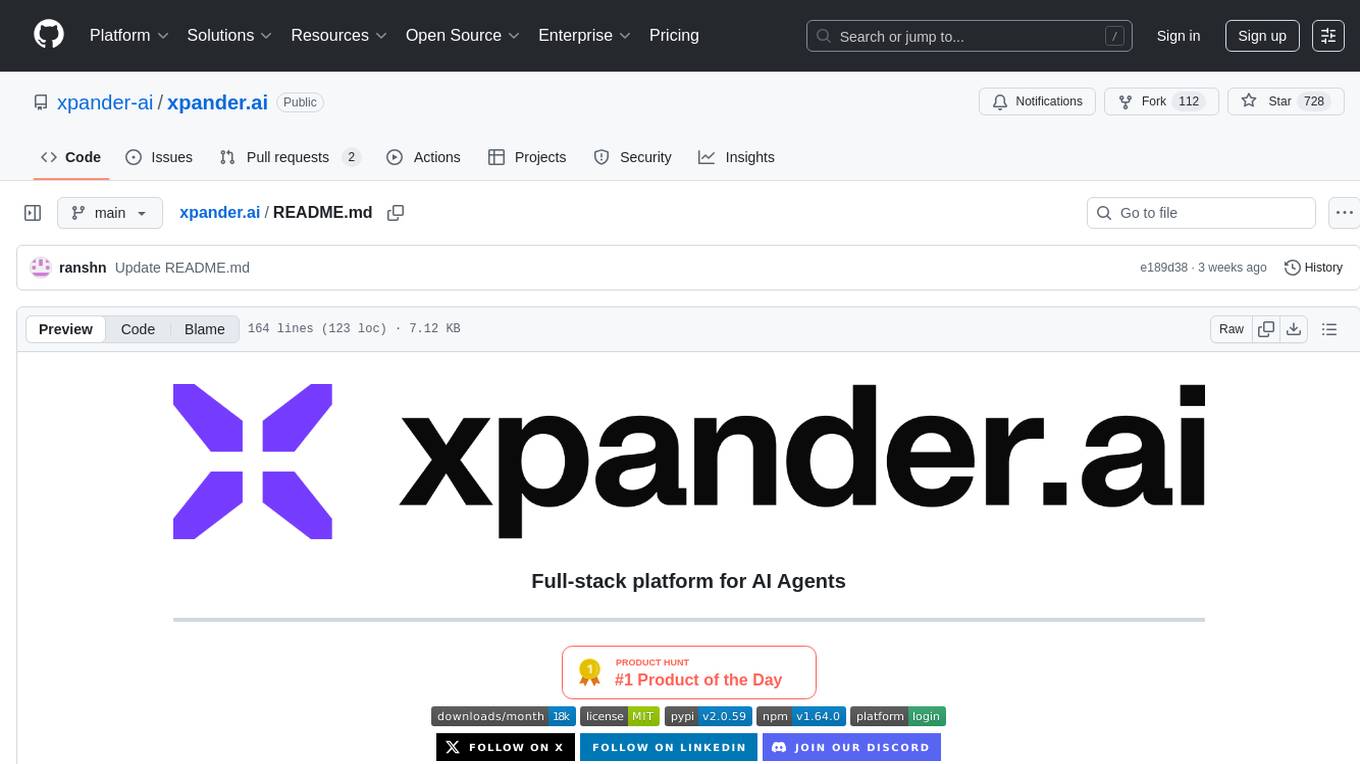
xpander.ai
xpander.ai is a Backend-as-a-Service for autonomous agents that abstracts the ops layer, allowing AI engineers to focus on behavior and outcomes. It provides managed agent hosting with version control and CI/CD, a fully managed PostgreSQL memory layer, and a library of 2,000+ functions. The platform features an AI native triggering system that processes inputs from various sources and delivers unified messages to agents. With support for any agent framework or SDK, including Agno and OpenAI, xpander.ai enables users to build intelligent, production-ready AI agents without dealing with infrastructure complexity.
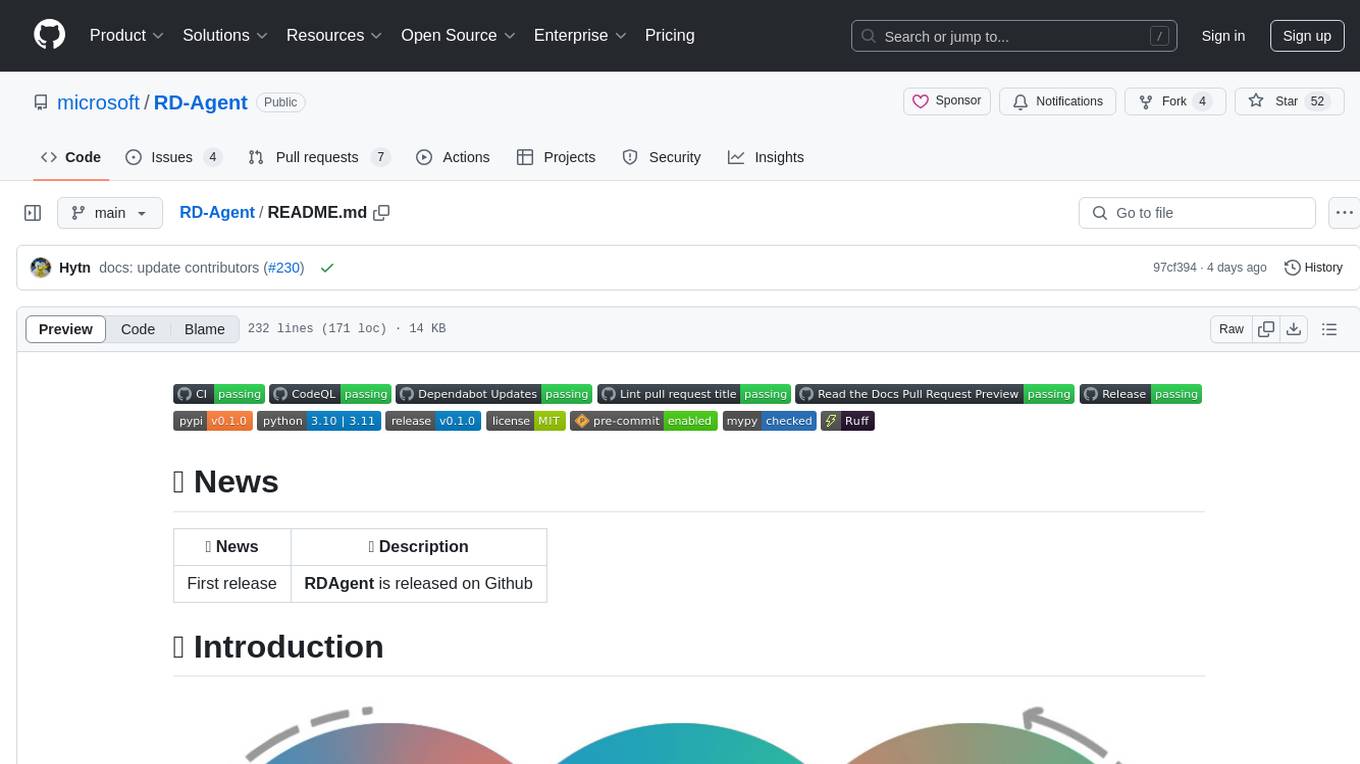
RD-Agent
RD-Agent is a tool designed to automate critical aspects of industrial R&D processes, focusing on data-driven scenarios to streamline model and data development. It aims to propose new ideas ('R') and implement them ('D') automatically, leading to solutions of significant industrial value. The tool supports scenarios like Automated Quantitative Trading, Data Mining Agent, Research Copilot, and more, with a framework to push the boundaries of research in data science. Users can create a Conda environment, install the RDAgent package from PyPI, configure GPT model, and run various applications for tasks like quantitative trading, model evolution, medical prediction, and more. The tool is intended to enhance R&D processes and boost productivity in industrial settings.
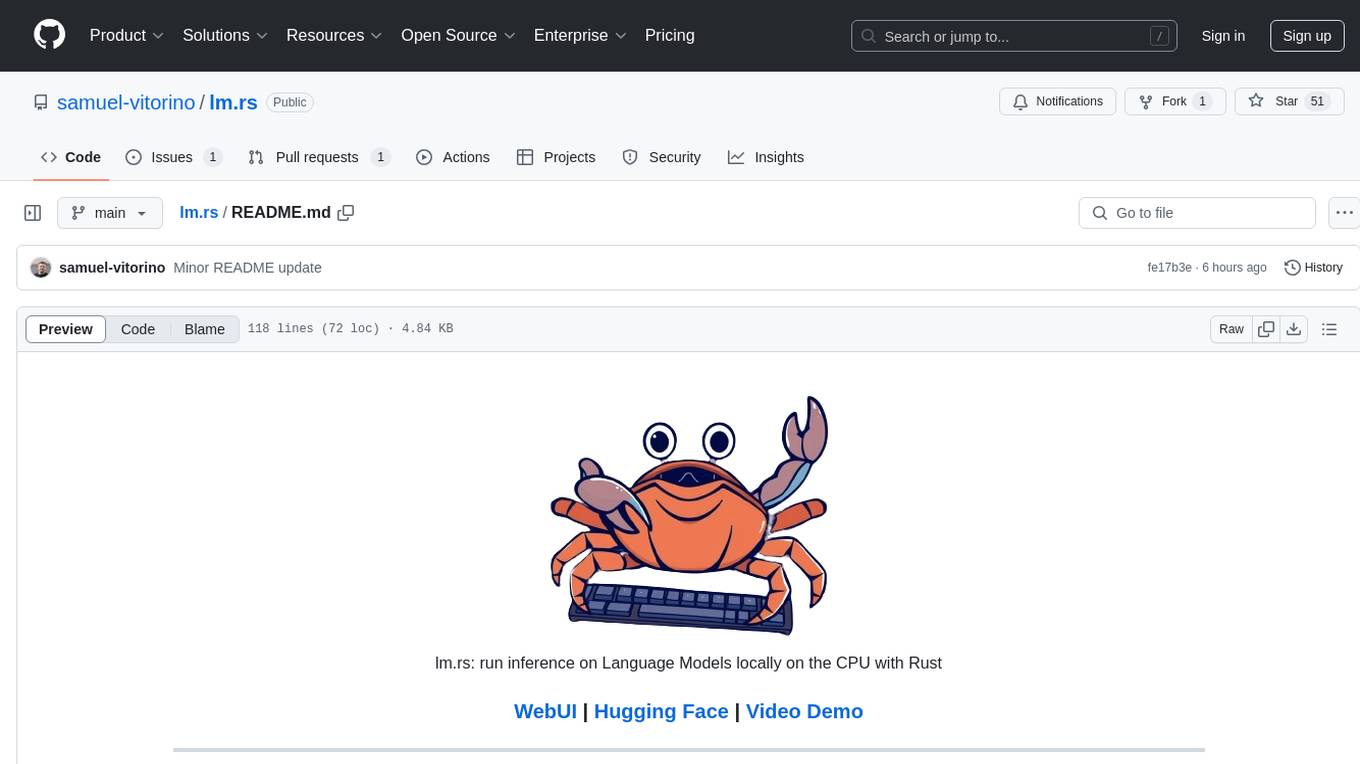
lm.rs
lm.rs is a tool that allows users to run inference on Language Models locally on the CPU using Rust. It supports LLama3.2 1B and 3B models, with a WebUI also available. The tool provides benchmarks and download links for models and tokenizers, with recommendations for quantization options. Users can convert models from Google/Meta on huggingface using provided scripts. The tool can be compiled with cargo and run with various arguments for model weights, tokenizer, temperature, and more. Additionally, a backend for the WebUI can be compiled and run to connect via the web interface.
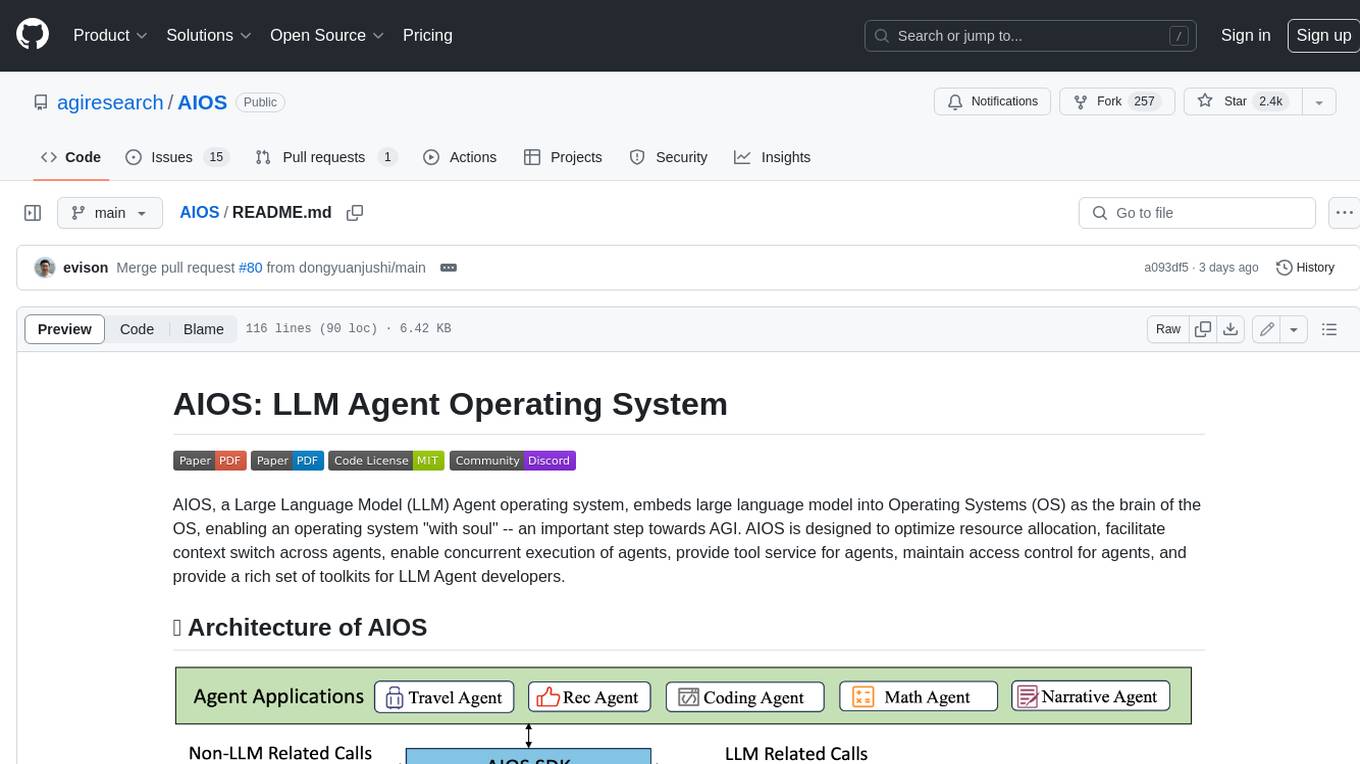
AIOS
AIOS, a Large Language Model (LLM) Agent operating system, embeds large language model into Operating Systems (OS) as the brain of the OS, enabling an operating system "with soul" -- an important step towards AGI. AIOS is designed to optimize resource allocation, facilitate context switch across agents, enable concurrent execution of agents, provide tool service for agents, maintain access control for agents, and provide a rich set of toolkits for LLM Agent developers.
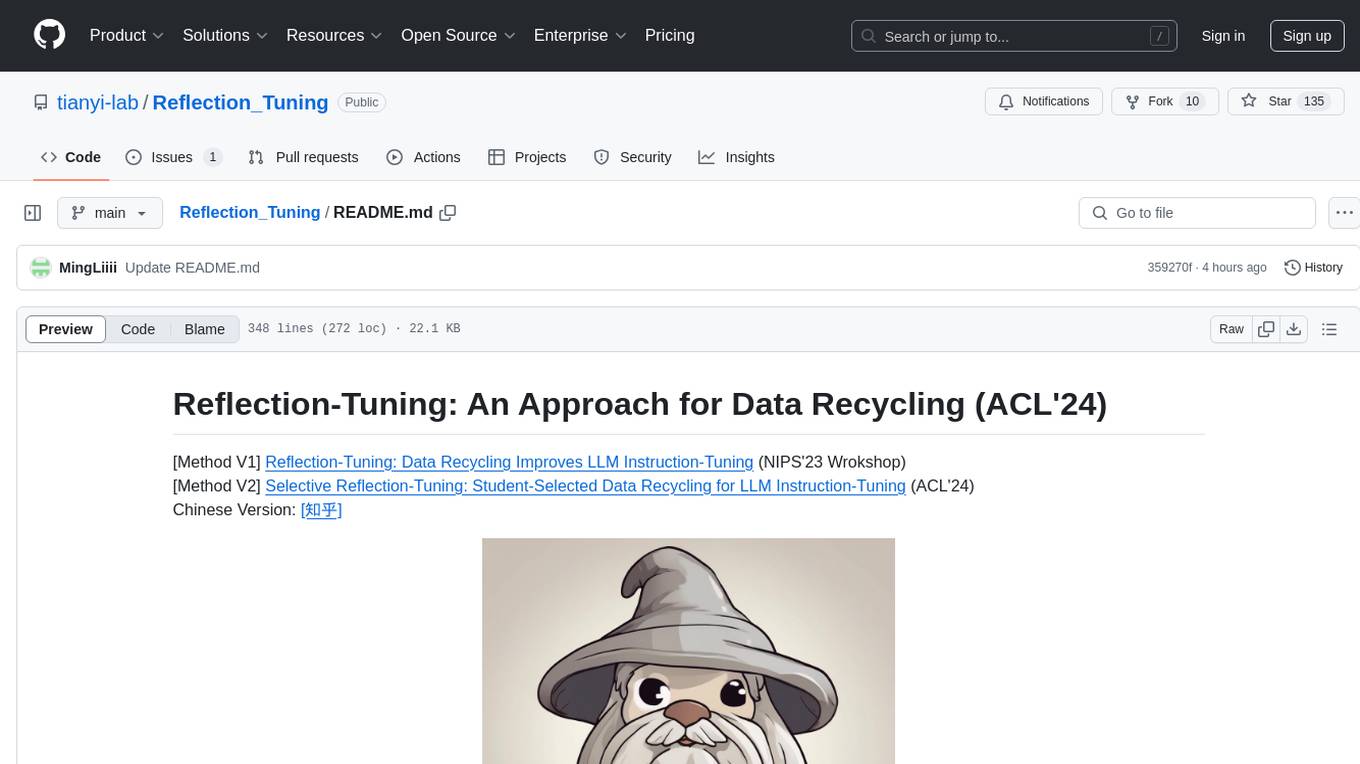
Reflection_Tuning
Reflection-Tuning is a project focused on improving the quality of instruction-tuning data through a reflection-based method. It introduces Selective Reflection-Tuning, where the student model can decide whether to accept the improvements made by the teacher model. The project aims to generate high-quality instruction-response pairs by defining specific criteria for the oracle model to follow and respond to. It also evaluates the efficacy and relevance of instruction-response pairs using the r-IFD metric. The project provides code for reflection and selection processes, along with data and model weights for both V1 and V2 methods.
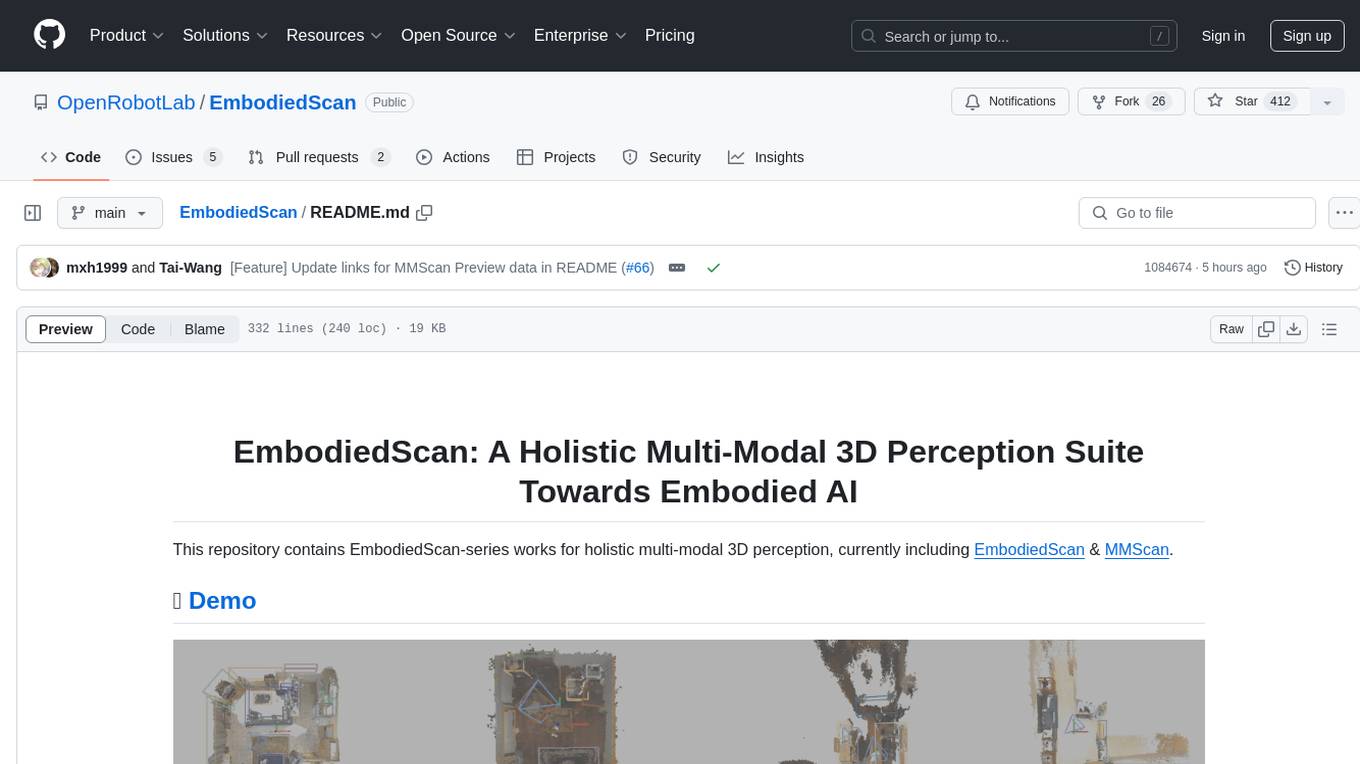
EmbodiedScan
EmbodiedScan is a holistic multi-modal 3D perception suite designed for embodied AI. It introduces a multi-modal, ego-centric 3D perception dataset and benchmark for holistic 3D scene understanding. The dataset includes over 5k scans with 1M ego-centric RGB-D views, 1M language prompts, 160k 3D-oriented boxes spanning 760 categories, and dense semantic occupancy with 80 common categories. The suite includes a baseline framework named Embodied Perceptron, capable of processing multi-modal inputs for 3D perception tasks and language-grounded tasks.
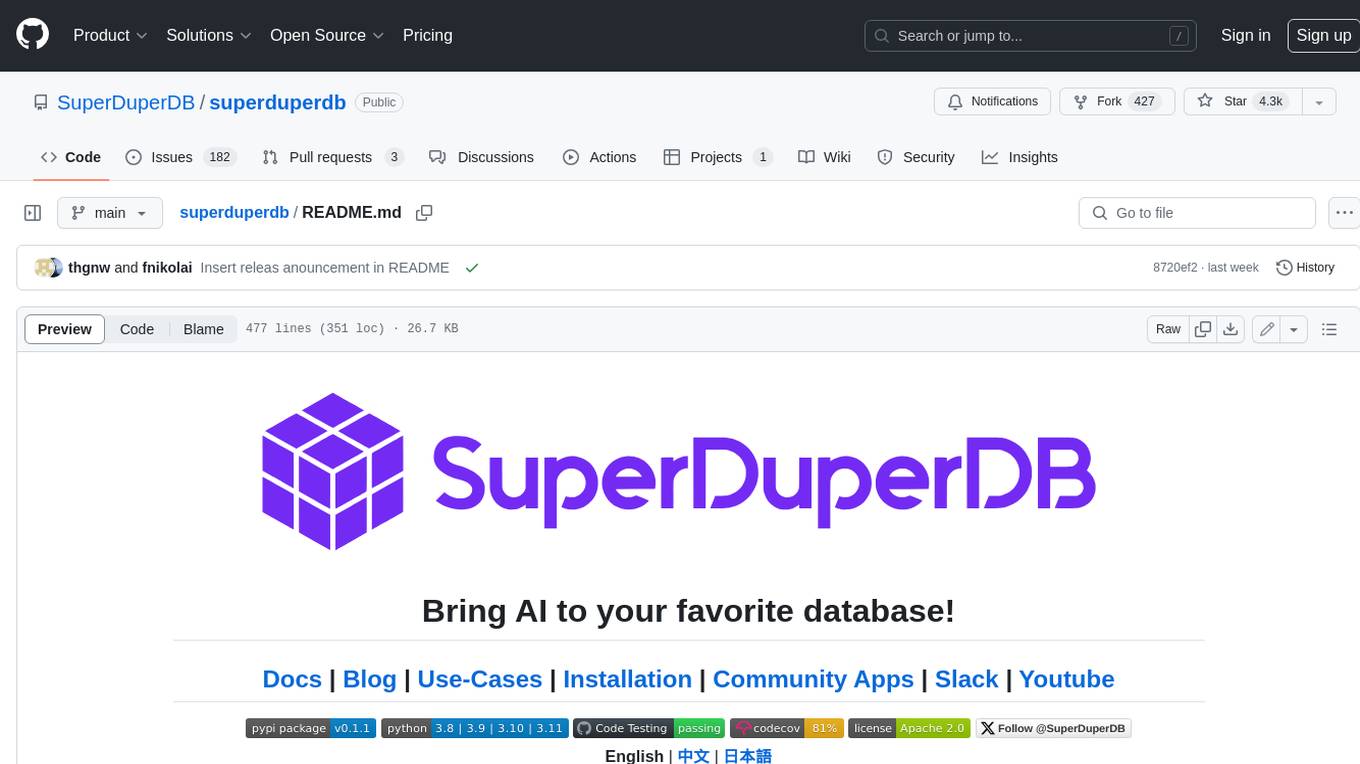
superduperdb
SuperDuperDB is a Python framework for integrating AI models, APIs, and vector search engines directly with your existing databases, including hosting of your own models, streaming inference and scalable model training/fine-tuning. Build, deploy and manage any AI application without the need for complex pipelines, infrastructure as well as specialized vector databases, and moving our data there, by integrating AI at your data's source: - Generative AI, LLMs, RAG, vector search - Standard machine learning use-cases (classification, segmentation, regression, forecasting recommendation etc.) - Custom AI use-cases involving specialized models - Even the most complex applications/workflows in which different models work together SuperDuperDB is **not** a database. Think `db = superduper(db)`: SuperDuperDB transforms your databases into an intelligent platform that allows you to leverage the full AI and Python ecosystem. A single development and deployment environment for all your AI applications in one place, fully scalable and easy to manage.
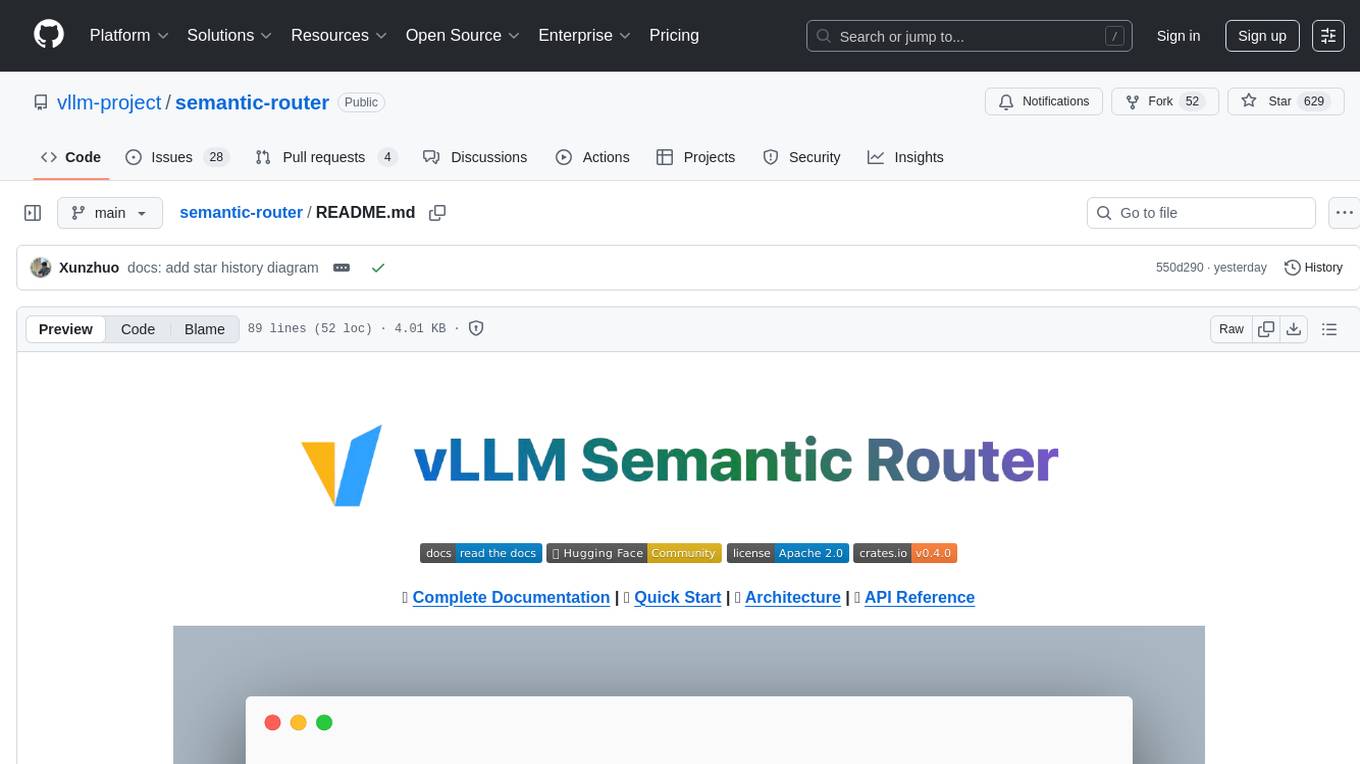
semantic-router
The Semantic Router is an intelligent routing tool that utilizes a Mixture-of-Models (MoM) approach to direct OpenAI API requests to the most suitable models based on semantic understanding. It enhances inference accuracy by selecting models tailored to different types of tasks. The tool also automatically selects relevant tools based on the prompt to improve tool selection accuracy. Additionally, it includes features for enterprise security such as PII detection and prompt guard to protect user privacy and prevent misbehavior. The tool implements similarity caching to reduce latency. The comprehensive documentation covers setup instructions, architecture guides, and API references.
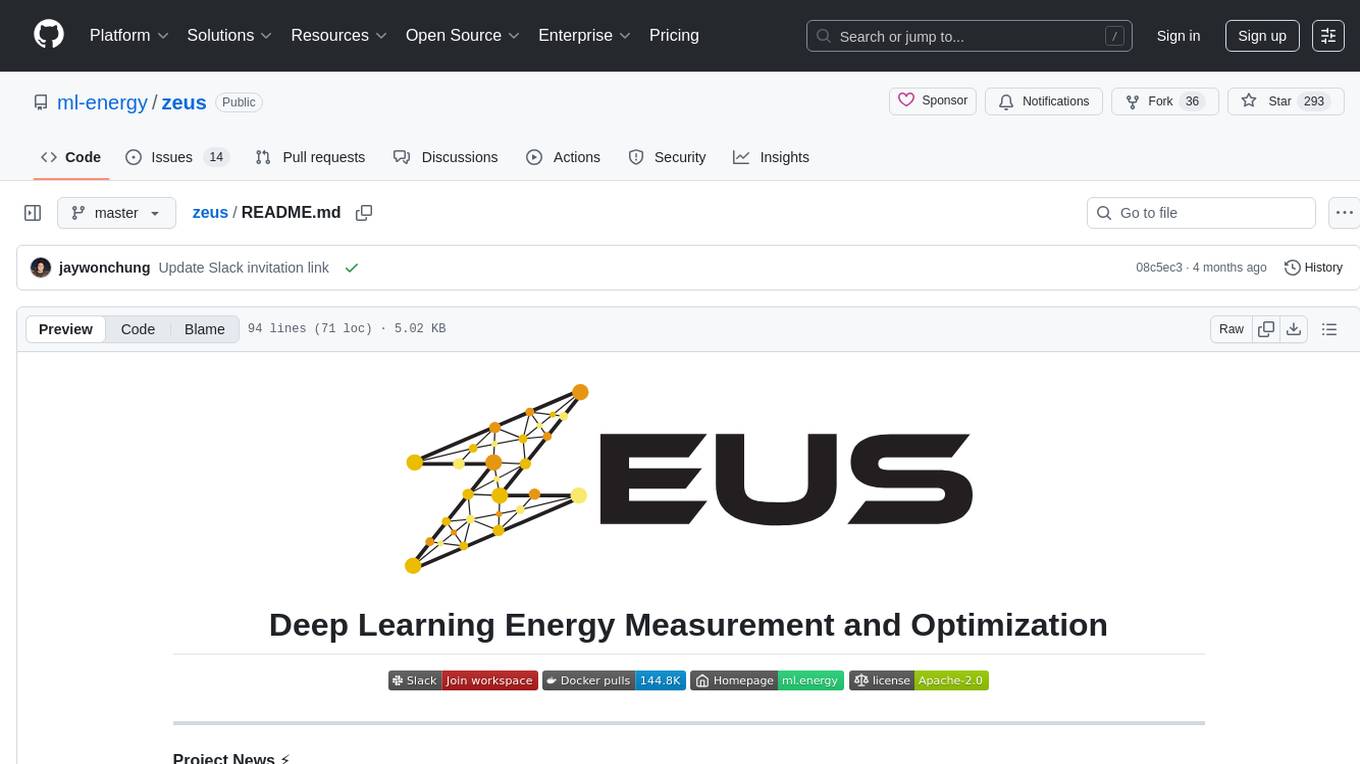
zeus
Zeus is a library for measuring the energy consumption of Deep Learning workloads and optimizing their energy consumption. It provides functionalities for energy and power measurement, time and energy optimization, device abstraction, utility functions, and more. Zeus is part of The ML.ENERGY Initiative and has been recognized in various research papers and conferences. It offers a Docker image with all dependencies, working examples for integration, and ongoing research to enhance its capabilities.
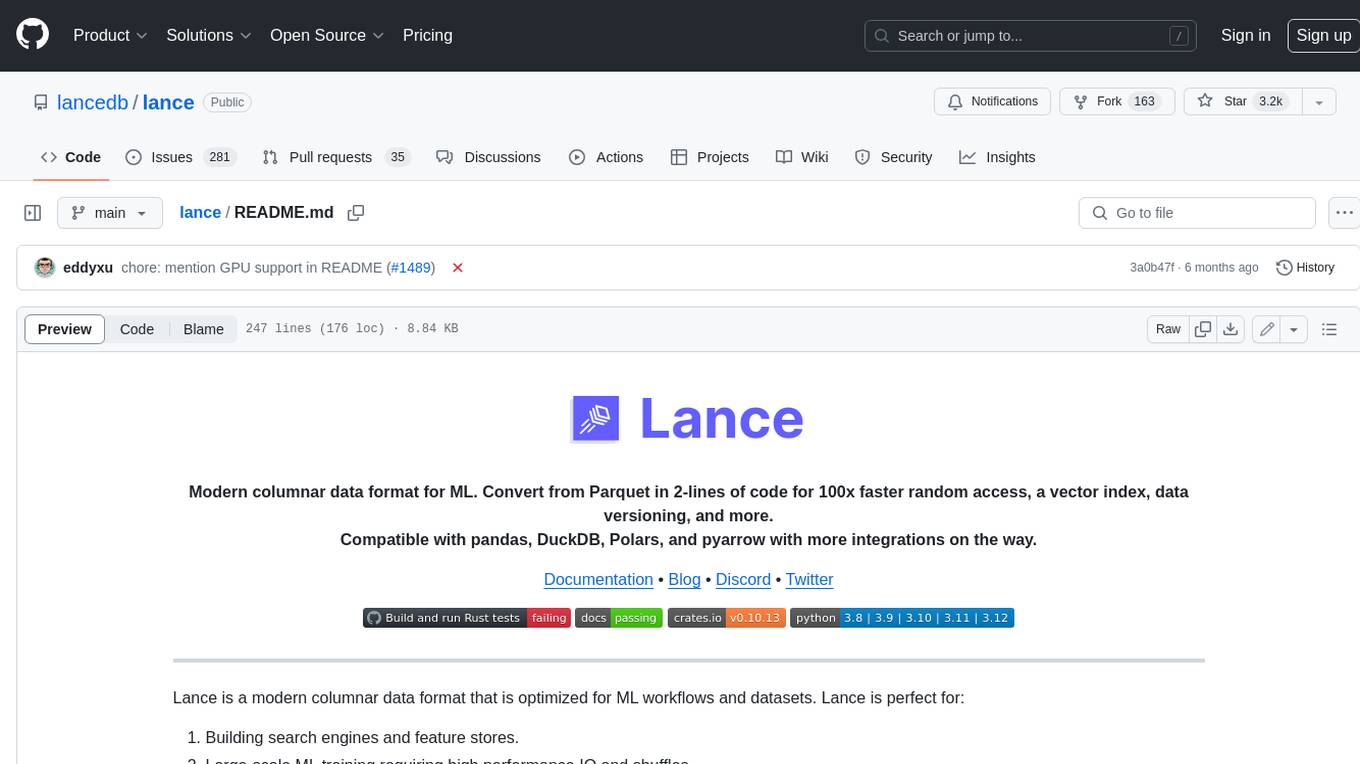
lance
Lance is a modern columnar data format optimized for ML workflows and datasets. It offers high-performance random access, vector search, zero-copy automatic versioning, and ecosystem integrations with Apache Arrow, Pandas, Polars, and DuckDB. Lance is designed to address the challenges of the ML development cycle, providing a unified data format for collection, exploration, analytics, feature engineering, training, evaluation, deployment, and monitoring. It aims to reduce data silos and streamline the ML development process.
For similar tasks

PURE
PURE (Process-sUpervised Reinforcement lEarning) is a framework that trains a Process Reward Model (PRM) on a dataset and fine-tunes a language model to achieve state-of-the-art mathematical reasoning capabilities. It uses a novel credit assignment method to calculate return and supports multiple reward types. The final model outperforms existing methods with minimal RL data or compute resources, achieving high accuracy on various benchmarks. The tool addresses reward hacking issues and aims to enhance long-range decision-making and reasoning tasks using large language models.
For similar jobs

weave
Weave is a toolkit for developing Generative AI applications, built by Weights & Biases. With Weave, you can log and debug language model inputs, outputs, and traces; build rigorous, apples-to-apples evaluations for language model use cases; and organize all the information generated across the LLM workflow, from experimentation to evaluations to production. Weave aims to bring rigor, best-practices, and composability to the inherently experimental process of developing Generative AI software, without introducing cognitive overhead.

LLMStack
LLMStack is a no-code platform for building generative AI agents, workflows, and chatbots. It allows users to connect their own data, internal tools, and GPT-powered models without any coding experience. LLMStack can be deployed to the cloud or on-premise and can be accessed via HTTP API or triggered from Slack or Discord.

VisionCraft
The VisionCraft API is a free API for using over 100 different AI models. From images to sound.

kaito
Kaito is an operator that automates the AI/ML inference model deployment in a Kubernetes cluster. It manages large model files using container images, avoids tuning deployment parameters to fit GPU hardware by providing preset configurations, auto-provisions GPU nodes based on model requirements, and hosts large model images in the public Microsoft Container Registry (MCR) if the license allows. Using Kaito, the workflow of onboarding large AI inference models in Kubernetes is largely simplified.

PyRIT
PyRIT is an open access automation framework designed to empower security professionals and ML engineers to red team foundation models and their applications. It automates AI Red Teaming tasks to allow operators to focus on more complicated and time-consuming tasks and can also identify security harms such as misuse (e.g., malware generation, jailbreaking), and privacy harms (e.g., identity theft). The goal is to allow researchers to have a baseline of how well their model and entire inference pipeline is doing against different harm categories and to be able to compare that baseline to future iterations of their model. This allows them to have empirical data on how well their model is doing today, and detect any degradation of performance based on future improvements.

tabby
Tabby is a self-hosted AI coding assistant, offering an open-source and on-premises alternative to GitHub Copilot. It boasts several key features: * Self-contained, with no need for a DBMS or cloud service. * OpenAPI interface, easy to integrate with existing infrastructure (e.g Cloud IDE). * Supports consumer-grade GPUs.

spear
SPEAR (Simulator for Photorealistic Embodied AI Research) is a powerful tool for training embodied agents. It features 300 unique virtual indoor environments with 2,566 unique rooms and 17,234 unique objects that can be manipulated individually. Each environment is designed by a professional artist and features detailed geometry, photorealistic materials, and a unique floor plan and object layout. SPEAR is implemented as Unreal Engine assets and provides an OpenAI Gym interface for interacting with the environments via Python.

Magick
Magick is a groundbreaking visual AIDE (Artificial Intelligence Development Environment) for no-code data pipelines and multimodal agents. Magick can connect to other services and comes with nodes and templates well-suited for intelligent agents, chatbots, complex reasoning systems and realistic characters.



